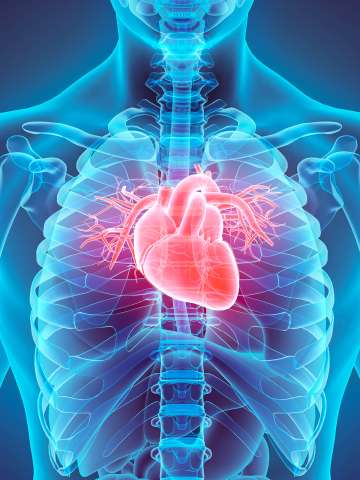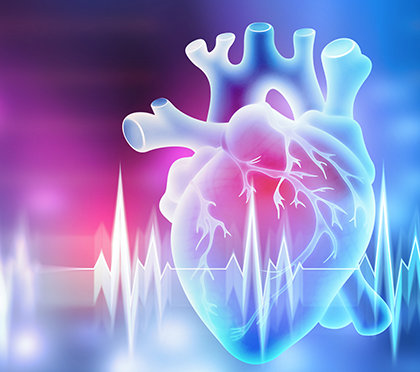Understanding the Significance of Cardiology in Modern Health Care Providers
Cardiology plays an essential role in contemporary health care, particularly as heart condition remains to be the leading reason for mortality worldwide. Advances in diagnostics and treatment have transformed patient care, enabling earlier interventions and boosted end results. Additionally, the shift in the direction of precautionary cardiology equips people to manage their health and wellness proactively. As technology remains to evolve, the assimilation of cutting-edge remedies might additionally redefine cardiology's effect on public health, motivating a more detailed assessment of arising trends and their implications.
The Frequency of Cardiovascular Disease and Its Influence on Public Health And Wellness
Heart condition stays the leading reason of fatality worldwide, its impact extends much past individual clients to influence public health systems and economic climates. The high prevalence of heart illness puts a significant stress on health care resources, demanding enhanced funding for therapy, recovery, and avoidance programs. Public health efforts need to resolve risk variables such as obesity, smoking cigarettes, and inactive lifestyles, which contribute significantly to the increasing occurrence of heart conditions.Moreover, the economic concern linked with cardiovascular disease is enormous, incorporating not only direct clinical costs however additionally indirect expenses connected to shed efficiency and early death. Communities deal with difficulties in taking care of these costs, usually bring about disparities in healthcare access and results. As the populace ages and lifestyle-related risks proceed to rise, the urgency for efficient cardiology interventions ends up being extremely important. Dealing with heart illness is not just a matter of specific health and wellness but additionally a crucial public wellness top priority.
Developments in Cardiac Diagnostics and Imaging Techniques
Current innovations in heart diagnostics and imaging techniques have actually changed the area of cardiology, enhancing the capability to discover and check heart problem. Strategies such as cardiac MRI, CT angiography, and echocardiography have become significantly innovative, giving detailed pictures of heart structures and functions. These methods permit for the very early recognition of conditions like coronary artery disease, cardiac arrest, and valvular disorders.Moreover, innovations in non-invasive diagnostics, such as wearable innovation and remote monitoring devices, have actually encouraged patients and doctor. These devices help with real-time tracking of heart rhythms and other crucial signs, bring about prompt interventions. In addition, expert system is being integrated right into imaging analysis, boosting accuracy and efficiency in medical diagnosis.
Innovations in Treatment Choices for Heart Conditions
Current advancements in cardiology have actually led to significant advancements in therapy choices for heart disease. These include sophisticated surgical techniques that boost procedural end results and emerging medicines that provide brand-new opportunities for treatment. As the area progresses, these technologies play an essential role in enhancing person care and outcomes.
Advanced Surgical Techniques
Technologies in medical methods have actually transformed the landscape of cardiology, using brand-new hope for individuals with heart problems. Minimally invasive treatments, such as catheter-based treatments, have actually significantly lowered healing times and hospital stays. Techniques like robotic-assisted surgical treatment improve precision, allowing specialists to browse intricate physiological structures with better precision. In addition, advancements in imaging innovation facilitate real-time visualization during treatments, boosting outcomes. Transcatheter aortic valve replacement (TAVR) exhibits an advancement in treating aortic stenosis, enabling shutoff substitute without open-heart surgical procedure. In addition, hybrid techniques that integrate catheter-based and surgical techniques offer tailored services for different cardiac concerns. These innovative medical methods not just improve client security however likewise expand treatment choices, underscoring the vital role of technology in modern cardiology methods.
Emerging Drugs and Treatments
As the landscape of cardiology proceeds to progress, emerging medicines and therapies play a crucial role in enhancing therapy options for heart conditions. Innovations such as novel anticoagulants and advanced lipid-lowering agents have actually changed the administration of cardio diseases, considerably decreasing patient morbidity and death. Furthermore, the advancement of gene treatments and regenerative medication offers encouraging methods for treating conditions previously regarded irreversible. Clinical tests are constantly disclosing the efficacy of these therapies, pushing the boundaries of conventional therapies. Furthermore, the assimilation of electronic health and wellness modern technologies helps with customized medicine, permitting customized treatment plans based upon genetic and way of life aspects. Jointly, these developments highlight the vibrant nature of cardiology, boosting individual end results and redefining standards of care in modern-day healthcare.
The Role of Preventive Cardiology in Client Treatment
Preventative cardiology plays an important function in individual treatment by concentrating on the identification of danger factors that contribute to cardiovascular disease. Via way of life alteration approaches and very early discovery strategies, health care carriers can properly lower the incidence of cardiovascular occasions - Cardiology Jupiter. This positive strategy not just boosts individual outcomes but also advertises long-term health
Threat Aspect Recognition
While heart diseases stay a leading cause of morbidity and mortality worldwide, effective danger variable recognition functions as a cornerstone of precautionary cardiology. Identifying risk factors such as high blood pressure, family, hyperlipidemia, and diabetes mellitus background is vital for early treatment. Healthcare experts use different evaluating methods to review these elements, enabling customized preventive procedures. Furthermore, recognizing an individual's way of life options, such as smoking cigarettes and physical lack of exercise, even more educates risk analyses. This comprehensive assessment allows medical professionals to establish customized care plans targeted at mitigating threats. By focusing on threat factor identification, health care systems can enhance patient outcomes and reduce the general burden of heart diseases, ultimately adding to boosted public wellness strategies and source allotment.
Way Of Life Alteration Strategies
A wide variety of researches highlights the essential role of way of life modification methods in lowering heart disease threat. These strategies incorporate dietary adjustments, increased physical activity, cigarette smoking cessation, and weight monitoring. By adopting a heart-healthy diet abundant in fruits, vegetables, entire grains, and lean healthy proteins, people can reduce cholesterol degrees and blood stress. Regular exercise strengthens the heart and improves overall cardio health. Furthermore, stopping cigarette smoking considerably minimizes the danger of cardiovascular disease and boosts recuperation prices for those with existing conditions. Weight management further adds to cardio health and wellness by reducing other risk elements such as diabetes and high blood pressure. Applying these way of living transforms not just advertises private wellness but also offers as a keystone of preventative cardiology in patient treatment.
Very Early Detection Techniques
Way of living adjustments significantly add to minimizing cardiovascular disease threats, but they are most effective when paired with early discovery techniques. Preventative cardiology highlights the importance of recognizing prospective heart problems before they intensify go to this site into major problems. Techniques such as high blood pressure surveillance, cholesterol testing, and advanced imaging technologies like echocardiograms play essential roles in reviewing cardiovascular wellness. Biomarkers and genetic screening likewise improve the accuracy of very early detection, enabling tailored preventative techniques. Normal cardiac threat assessments encourage doctor to interfere proactively, potentially protecting against cardiac arrest and strokes (Dr Garcia). By incorporating these early detection techniques right into routine care, people can take advantage of prompt way of life treatments and targeted therapies, inevitably improving and boosting results lifestyle
Integrating Modern Technology Into Cardiology Practices
As advancements in technology continue to improve numerous fields, the combination of ingenious devices and systems right into cardiology practices has actually come to be essential for improving individual care and outcomes. Telemedicine platforms permit cardiologists to check patients remotely, improving access to care while minimizing the worry on medical care facilities. Wearable devices, such as smartwatches, enable constant heart rate tracking, informing both medical professionals and people to potential problems in real-time. Furthermore, fabricated intelligence (AI) is being utilized to analyze huge quantities of heart information, assisting in early medical diagnosis and tailored therapy strategies. Advanced imaging methods, including 3D echocardiography, boost visualization of heart frameworks, causing a lot more exact interventions. Electronic health documents (EHRs) enhance individual details administration, making sure that cardiologists have instant access to essential data. Together, these technological developments are changing cardiology, promoting proactive monitoring and enhanced health and wellness outcomes for people with cardio conditions.
The Importance of Person Education and Interaction
Patient education and learning and interaction play a pivotal duty in the administration of cardio health and wellness. By outfitting individuals with expertise regarding their problems, treatment alternatives, and way of living adjustments, doctor empower individuals to take an energetic duty in their treatment. This positive method can bring about improved adherence to recommended drugs, dietary modifications, and workout regimens, eventually minimizing the threat of complications.Engagement additionally fosters a solid patient-provider relationship, encouraging open interaction and trust. When clients feel educated and included, they are most likely to voice concerns and ask questions, which can result in much better professional outcomes. Additionally, instructional resources, such as workshops or electronic systems, can enhance understanding and advertise self-management techniques. Overall, prioritizing patient education and involvement is vital for boosting cardio wellness, improving lifestyle, and reducing healthcare costs associated with heart diseases.
Future Trends in Cardiology and Their Prospective Effect

Regularly Asked Questions
What Lifestyle Adjustments Can Reduce Heart Illness Danger?
The current inquiry addresses way of life changes that can greatly reduce heart problem danger. Cardiology. Embracing a balanced diet regimen, participating in regular physical activity, preserving a healthy and balanced weight, taking care of stress and anxiety, and preventing tobacco can notably boost cardiovascular health
Exactly How Can I Identify Very Early Indicators of Heart Issues?
Acknowledging early signs of heart troubles includes monitoring symptoms such as chest pain, shortness of breath, exhaustion, and uneven heart beat. Prompt understanding of these indicators can motivate required medical examination and intervention for much better outcomes.
What Are the Distinctions Between Cardiologists and Heart Surgeons?
The differences between cardiologists and heart cosmetic surgeons depend on their roles; cardiologists mostly diagnose and handle heart problems through non-invasive techniques, while heart cosmetic surgeons execute surgical treatments to deal with structural heart problems. Each plays a additional reading vital, unique duty.

Exactly how Typically Should I Get My Heart Health Checked?
The frequency of heart medical examination differs based on individual risk variables. Usually, grownups must undergo evaluations each to 2 years, while those with current conditions might need more constant analyses as encouraged by health care professionals.
What Duty Does Genetics Play in Heart Disease Threat?
Genetics greatly influences heart illness risk, with domestic patterns suggesting inherited problems. Particular genes can incline individuals to hypertension, cholesterol concerns, and various other cardio issues, highlighting the importance of hereditary screening in reviewing heart health and wellness. Heart disease stays the leading cause of fatality worldwide, its influence prolongs much beyond specific patients to influence public health systems and economic situations. Public health campaigns should resolve risk variables such as obesity, smoking cigarettes, and sedentary way of lives, which add significantly to the climbing incidence of heart conditions.Moreover, the financial worry associated with heart illness is immense, including not just direct medical expenses yet also indirect costs connected to lost efficiency and early death. Preventive cardiology plays a necessary role in client treatment by concentrating on the identification of danger elements that add to heart illness. Synthetic knowledge (AI) and maker knowing are enhancing diagnostics and patient monitoring, allowing early discovery of heart conditions. The differences in between cardiologists and cardiac doctors exist in their duties; cardiologists largely identify and manage heart problems through non-invasive approaches, while cardiac cosmetic surgeons execute surgical procedures to fix structural heart problems.